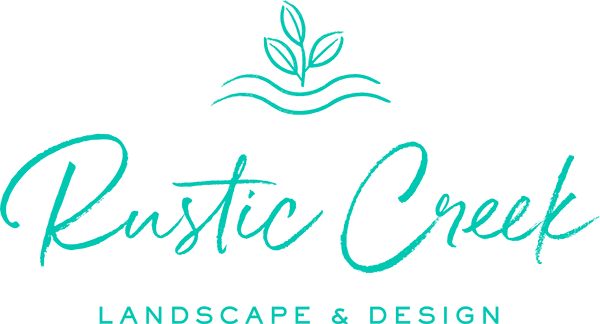A backyard swimming pool is more than just a fantastic place to cool off during the scorching summer months. It’s also a large statement piece that can elevate the aesthetic and functionality of your outdoor space—as long as it’s designed well! Choosing the right elements for your pool can make all the difference. This includes size, features, materials, and, of course, the shape.
Finding the perfect pool shape for your yard might seem simple, but it actually requires a good amount of thought. You need to consider things like:
- Your property size
- Your existing landscaping
- Intended use
- Personal preferences and tastes
As you take all these things into consideration, your pool project will start taking shape—literally!
Here’s a guide that will help walk you through the process so you can build a pool that fits your yard (and your tastes) perfectly.
Step 1: Understand your needs.
To find the right shape for your pool, you first need to know how you plan to use the pool. Consider these potential functions of your pool and the ideal shape for each:
- Recreation: Want to maximize family togetherness, or throw pool parties? Prioritize swimming space with a rectangular pool or a freeform pool.
- Relaxation: If you want your pool to create a more relaxing vibe, you might consider something rounder (like a kidney or oval shape) to create something soothing and serene.
- Exercise: Lap pools typically have long, rectangular shapes.
Try to think about your family’s needs both today and in the future. Do you need a shallow play area to allow children to play? Will people be using your pool that could benefit from shallow steps or places to sit and rest? Knowing how your pool will be used will help you narrow down the shapes that are best suited for your yard.
Step 2: Assess logistics.
Various logistics, including the size of your yard, your existing landscaping, and your neighborhood or city zoning requirements, may have a significant impact on what shape your pool can be.
- Size: The size and shape of your yard definitely matter when it comes to pool design. Small yards may only be able to feature plunge pools or narrow lap pools. Larger yards will be able to have pools with more elaborate features and designs.
- Landscaping: Is your yard currently full of trees, gardens, or other natural features? Are you willing to remove them to accommodate your pool?
- Zoning and setback requirements: Local regulations may dictate the size or placement of your pool, which can affect your shape options. Check for setbacks, easements, and other restrictions before getting your heart set on a specific design. (Tip: Talk to a local landscape design company to help you get a clear picture of the rules and regulations that apply to you.)
Take thorough measurements of your yard, assess your current landscape situation, and learn your local regulations to help further guide your choice of pool shape.
Step 3: Explore popular pool shapes.
Time to get inspired. Check out pictures of pools in some of the most common shapes to help you define your own vision for your pool. Popular shapes include:
- Rectangular: Clean lines and versatility, with a sleek, modern look
- Oval: Softer-edged design with a more traditional look
- Freeform: Organic shapes that mimic natural bodies of water and blend into tropical or rustic landscapes
- Kidney–shaped: Classic design with a natural and intimate feel
- Figure–eight: A slight variation of the kidney shape with two distinct areas (perfect for separating shallow and deep ends, for example)
- L-Shaped: Ideal for multifunctional use, with a long section to serve as a lap area and a shorter section that’s perfect for lounging or play
- Custom: One-of-a-kind pool designs that allow you to tailor the shape to fit your yard and vision perfectly
You’ll probably be able to narrow down this list pretty quickly based on the work you did in steps one and two, but it’s still useful to know all the options.
Step 4: Consider your budget.
Pool shapes and designs can vary greatly in terms of cost. Complex or custom shapes often come with higher price tags, due to the need for additional materials and extra construction time. Typically, simpler shapes (like rectangles or ovals) are more budget-friendly.
Remember: The pool itself is just one budget line item to consider in the overall project. You’ll also need to factor in the cost for things like other landscaping and decking. Additionally, keep in mind that pools need to be maintained; make sure you take maintenance costs into account as you plan for your pool.
Step 5: Think about your home’s style.
You’ll want to choose a pool shape that complements your home’s style and adds to your desired aesthetic for your yard.
If you want a modern vibe, something with straight lines will create a sleek, minimalist aesthetic. If your home and yard are more traditional, oval or kidney-shaped pools are a great choice. And if you’re trying to create a natural-feeling landscape, a freeform pool might be your best option.
Step 6: Consult with professionals.
Sometimes, all the research and planning in the world can’t replace experience and expertise. Most pool projects strongly benefit from a consultation with a professional landscape designer, who can help you make smart, informed decisions about your pool shape and design.
Professionals can also help you:
- Visualize your new yard with mockups on professional software
- Discover specific materials that fit your style and budget
- Assess local regulations and safety standards that may impact your project
The right pool shape for your yard will strike the right balance between practicality, functionality, and style. As you consider your needs, preferences, and logistics, you’ll be able to select a pool shape that helps transform your outdoor space into a beautiful oasis.

